

| Visitors Now: | |
| Total Visits: | |
| Total Stories: |
Talk About Awesome Camo – Bugs And Spiders Disguised As Poop, Leaves, And Each Other
Thursday, December 5, 2013 8:09
% of readers think this story is Fact. Add your two cents.
(N.Morgan) I found these interesting pictures of bugs and their various disguises. Nature is truly amazing, in how these bugs have built in camo and masks. Check these images out!

We especially loved this bird dung crab spider (Phrynarachne) because it also looks like an Ewok. A poopy Ewok. Photo: Nicky Bay.
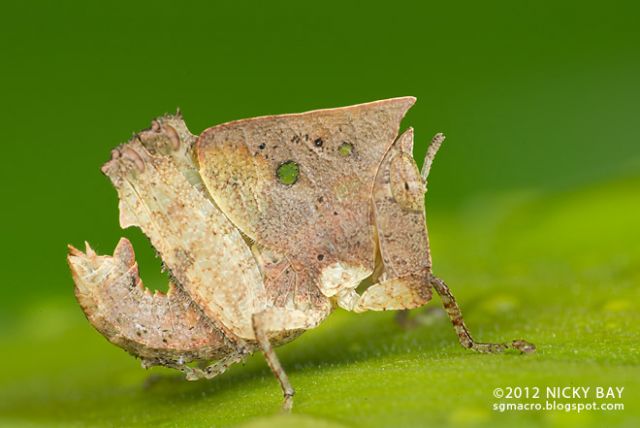
This is a grasshopper (Caelifera), not a dead leaf. Its little legs are the only things that give away the trickery. Photo: Nicky Bay.
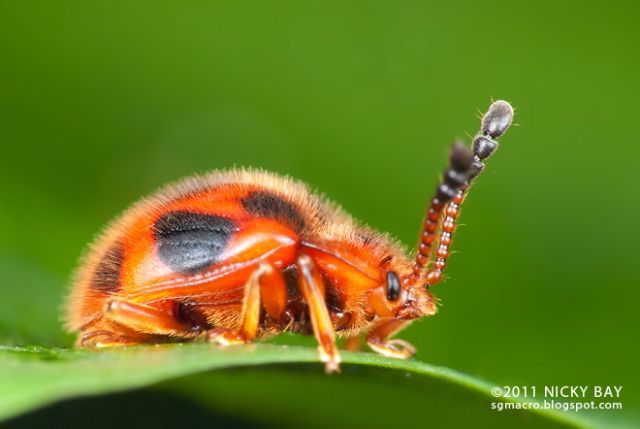
Real ladybirds, which normally taste terrible to predators, aren’t as fuzzy as this ladybird mimic beetle. Photo: Nicky Bay.
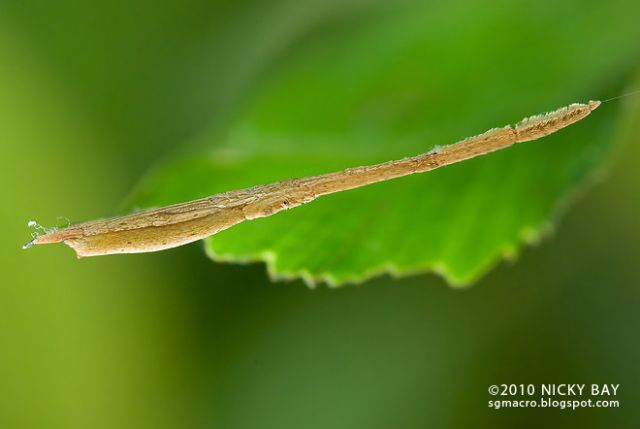
This thing is so amazing we don’t even know where to start. Here goes: THIS IS A SPIDER. A twig-like, feather-legged spider, Miagrammopes sp. We humbly bow down to this creature, which looks so very unspiderlike in every way. Photo: Nicky Bay.
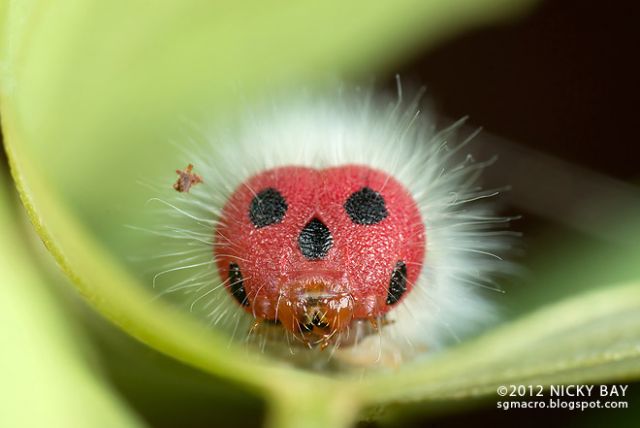
Sometimes, your face looks like a face. Other times, it looks like a lady bug. This is the larva of the common awl (Hasora badra basra), which clearly falls into the latter category. Photo: Nicky Bay.
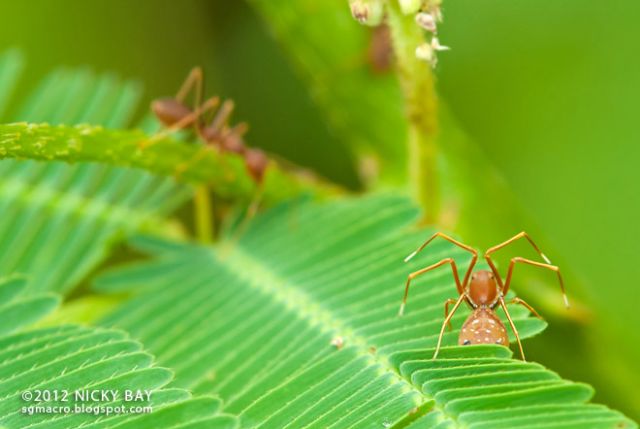
This ant-mimic crab spider (Amyciaea lineatipes) was hoping to attract a weaver ant by waving its forelegs and dancing around. It worked. Photo: Nicky Bay.
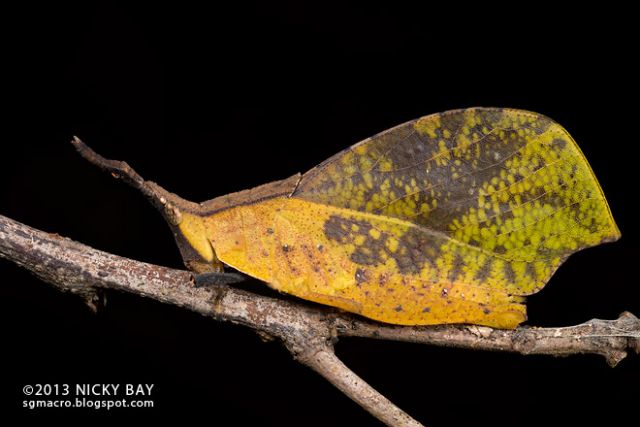
This is not a leaf that’s gently changing color as summer slips into fall. It’s a forest leaf grasshopper (Systella rafflesii), and it’s incredible. Photo: Nicky Bay.
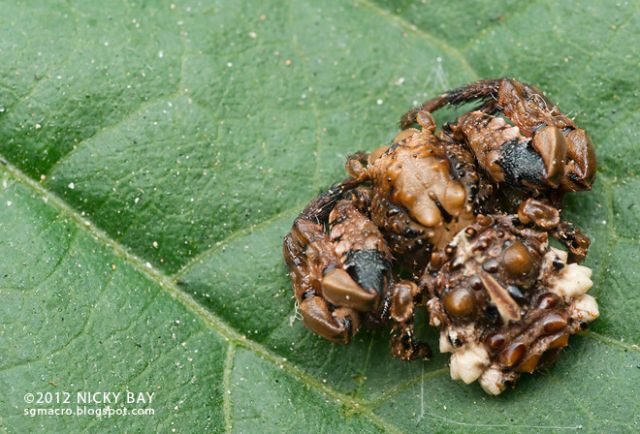
One of the more incredible spiders we’ve ever seen, this bird dung crab spider is doing its best to resemble something that most birds wouldn’t want to eat. It also looks like a totem pole. Photo: Nicky Bay.
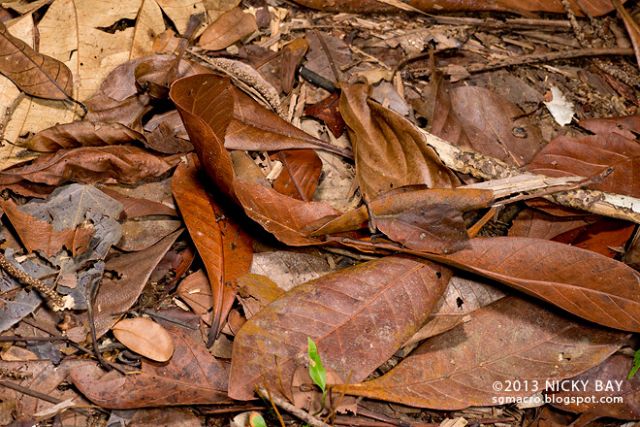
We swear there is a grasshopper (Systella rafflesii) in this pile of leaves. Do you see it? Give us your best guess in the comments! Photo: Nicky Bay.
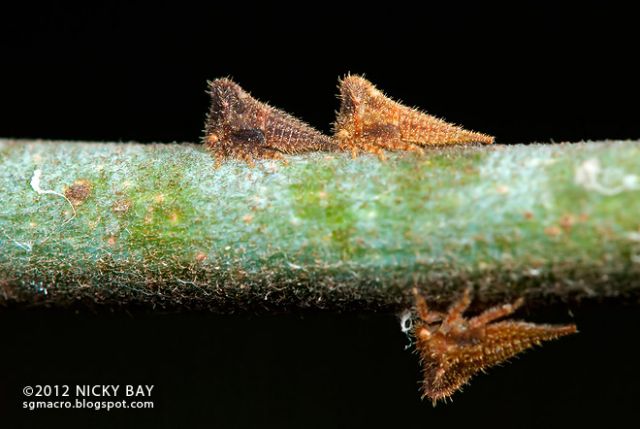
Treehoppers are among the most fascinating insects. In addition to often being exquisitely ornamented (and armored), the bugs (Membracidae) communicate with one another by vibrating the branches they’re perched on. Different vibrations mean different things — like alarm calls, for example. Rex Cocroft, an entomologist at the University of Missouri, has transduced some of the treehoppers’ shaking songs into tones audible to humans. They sound like everything from percussive pulses to whalesong. Photo: Nicky Bay.
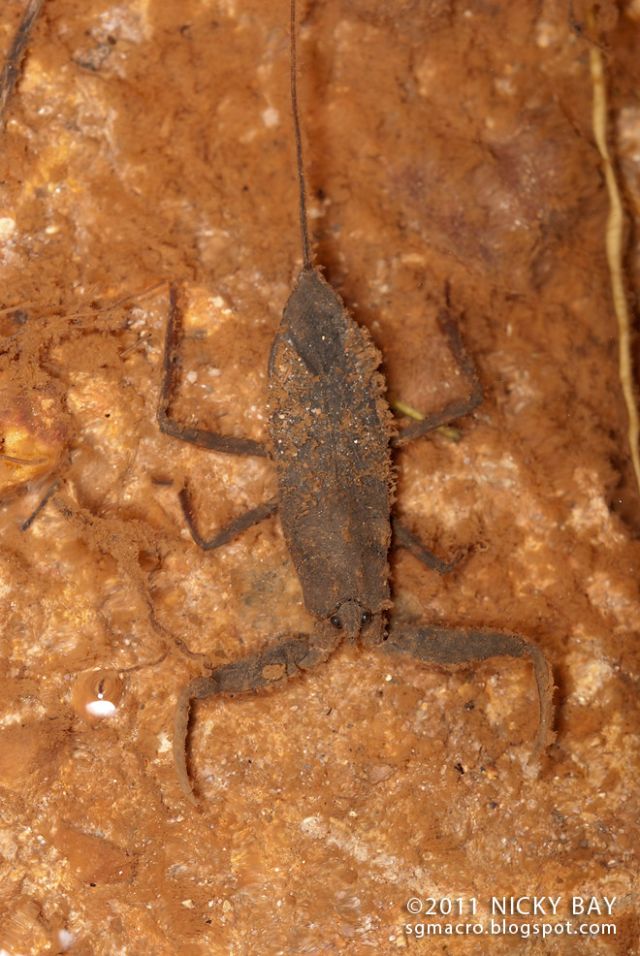
Scorpions are arachnids (like spiders), and this is not an arachnid. It’s an insect that’s doing its best to make its front legs look like claws and its tail look like a stinger. In reality, that tail functions like a snorkel: The water scorpion (Nepidae) uses it to breathe underwater. Oh, it also has two pairs of wings, and it flies. Photo: Nicky Bay.
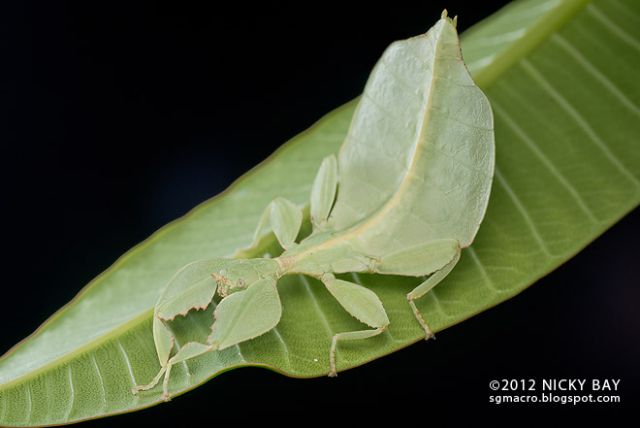
This leaf insect (Phyllium sp.) has a thin, wafer-like body that is almost indistinguishable from an actual leaf. Photo: Nicky Bay.
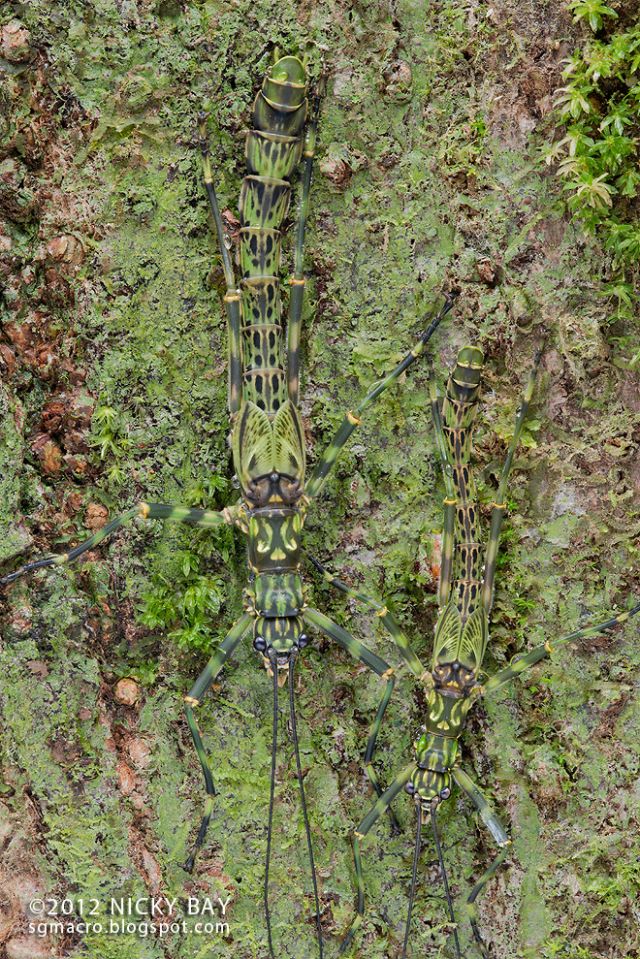
These stick insects (Aschiphasma annulipes) are so intricately beautiful it’s a shame they blend in so well with their green background. Photo: Nicky Bay.
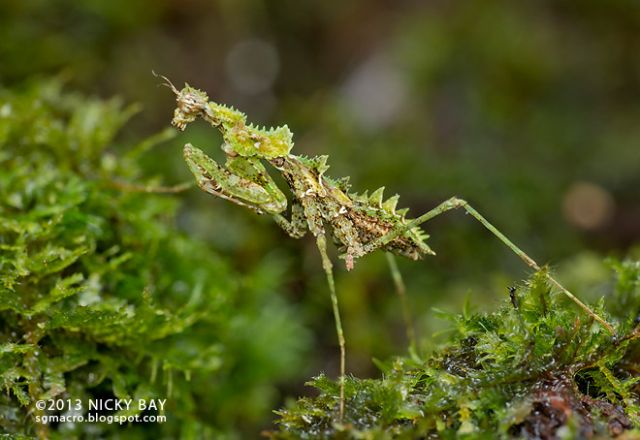
If you’re going to hide in plain sight in a humid, tropical place, looking like a patch of moss isn’t a bad idea. That’s what this mantis (Ceratohaania sp.) does. Mostly. From the side, its silhouette also manages to look remarkably dinosaurish. Photo: Nicky Bay.
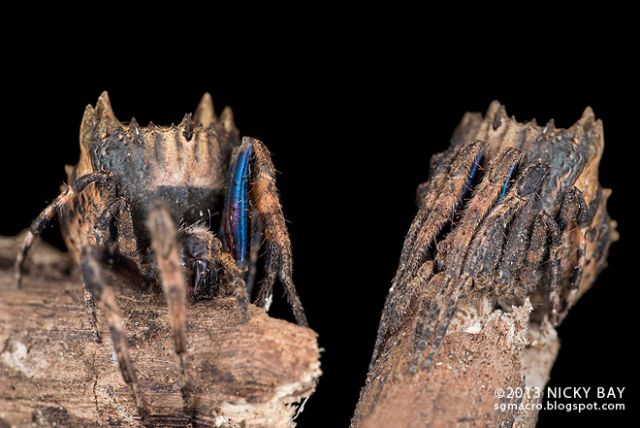
Nothing to see here, folks. Just this tiny little stump… (Tree Stump Orb Weaver, Poltys sp.) Photo: Nicky Bay.
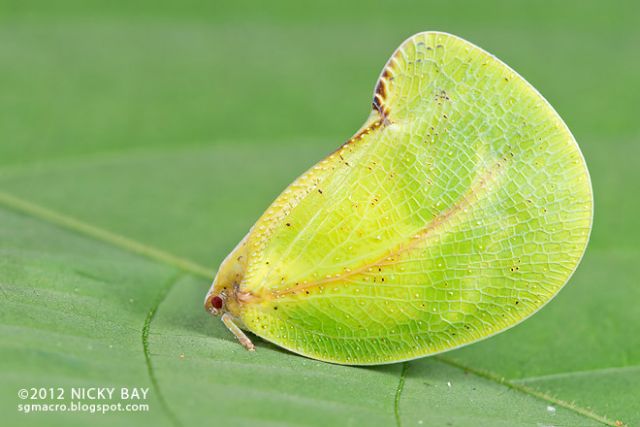
This is a leaf with red eyes. Aka, a Fulgoroid planthopper from the family Flatidae. Photo: Nicky Bay.

This spider (Ariamnes sp) uses its abdomen to resemble a twig. A twig in the breeze, perhaps. “Definitely not easy to get everything in the same plane of focus for this restless spider,” Bay noted. Photo: Nicky Bay.
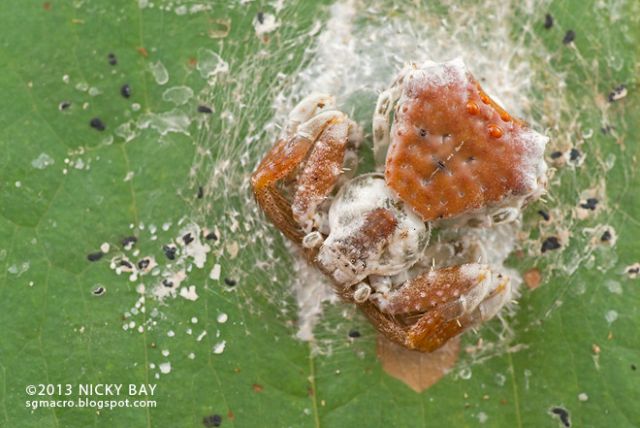
This is not a spider, it’s a bird dropping…or just a very cleverly colored little crab spider (Thomisidae). Photo: Nicky Bay.
More Stories:
Monsanto’s Monstrous GMO “Food” Experiments Conducted On Humans (Video)
Obama: “I Want You To Push Me For Martial Law” (Video)
Watch Mother Give Powerful Speech Against Obama’s Tyranny! (Amazing Video)
New Madrid Fault Line: Operation Vigilant Guard 11 Disaster Drill Begins This Week (Video)
FEMA To Build Camps, I Mean, Tornado Shelters For Boy Scouts In Missouri (New Video)
More Stories Contributed By N. Morgan



